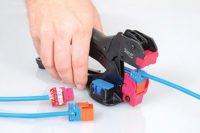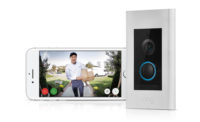
You can learn a lot about DVRs and NVRs from reading a brochure or visiting a company’s Web site. But nothing can replace personal contact with manufacturers. Not only do you have the chance interact with someone and provide your comments, questions or concerns, but you also get a unique opportunity to see just how dedicated — beyond a slick brochure or sales pitch — that company is to its customers.
Still, that contact only goes so far. You’re limited to your own questions, and if you come up with another later, you’ll be making another call.
That’s what makes trade shows, conferences, seminars and other gatherings so valuable to security installers and integrators. While you’re checking out manufacturers’ latest and greatest offerings, maybe chatting with their representatives, it’s hard not to eavesdrop on the questions being asked around you. Within the bits of conversation you’re able to pick up, you may even find the answer to a question you hadn’t even thought to ask — yet.
And every once in a while, someone poses a million-dollar question — the one that causes everyone within earshot to stop and listen unabashedly for the answer.
So what are some of those questions that DVR and NVR manufacturers are fielding from security installers and integrators? And what are the answers to those questions? Below are some of the most common, insightful and intelligent questions, as relayed by manufacturers.
1. HOW MUCH DO I HAVE TO KNOW ABOUT NETWORKING?
Video is everywhere. Combine that fact with increased use of IP cameras, and it should come as no surprise that the majority of questions being directed to DVR and NVR companies deal with one topic.
“Seventy percent of our DVR questions involve networking and how to accomplish it,” says Gary Perlin, vice president, video products, for Amityville, N.Y.-based Speco Technologies.
While there are a large number and wide variety of networking courses and certifications available to installers and integrators, Perlin says none of that training can truly prepare installers for all the variables they will encounter as they install and connect DVRs at customer sites.
“You can install the same DVR from the same manufacturer every day of the week, but no two installs will be alike because of differences in a facility’s network infrastructure or the type of Internet service they have coming into the building,” he describes.
So what does Perlin say installers should know before tackling network installations?
“Certainly a good understanding of networks and routers is a must in this day and age,” he believes. “The installer must truly understand the concept of networking to be able to deal with the small intricacies of each individual installation.”
2. CAN I USE THE SAME DVR/NVR FOR BOTH ANALOG AND IP CAMERAS?
Every installer has encountered the customer who wants to increase the size or scope of their video system but won’t even think about incurring the cost to replace their analog cameras.
“Many system designers and integrators are working with a lot of legacy analog cameras. Unfortunately, most DVRs are not able to use both analog and IP cameras,” says Mig Paredes, sales engineer for Carrollton, Texas-based Samsung GVI Security.
For combining these two types of cameras, both Paredes and Richard Koharik, A & E service manager for Hauppage, N.Y.-based Vicon Industries, say the best option is a hybrid unit, which combines both a DVR and an NVR into one.
“With a hybrid, not only do end users get to keep their analog cameras, but they also get a video system that will accommodate their needs in the future,” Koharik says.
3. HOW MANY HOURS OF VIDEO CAN BE STORED ON A HARD DRIVE?
End users want to know that their DVR or NVR is going to be able handle the amount of video the system is recording. After all, what good are state-of-the-art cameras, software and other video technologies if the storage drive can’t store all of the video that’s being recorded?
When it comes to storage capacity, manufacturers are constantly looking at larger hard drives, new compression technology and much more to provide the maximum amount of memory for saving video footage.
That said, the answer to the question is not something that most installers or customers want to hear: It depends.
“VCRs were very clear-cut in terms of recording times,” Perlin says. “When you’re talking about a hard drive, you have to take into account things like the number of cameras, resolution, compression, etc. There are online calculators that will figure that out based on specific specifications.”
4. WHAT DO I NEED TO PROVIDE DVRS AND NVRS FOR MY CUSTOMERS WHO WANT HIGH-DEFINITION VIDEO?
End users have been spoiled by HD video through TV, movies, the Internet and more sources. According to Bud Broomhead, CEO of Cupertino, Calif.-based Intransa, while customers want HD in their video systems, that’s often easier said than done.
“The features and functions are there, and the customer demand for HD is there, but in a lot of cases, the IT-based systems aren’t there,” Broomhead says.
The problem, he explains, harkens back to the networking question. The channel that owns the customers consists mostly of security installers who are not IT-savvy, and therefore aren’t prepared to offer HD.
“Their specialties lie in things like camera selection, camera placement and lighting — not in assembling the infrastructure that supports an HD application,” Broomhead describes.
In short, he says, without a good IP-based network, HD is not possible. If an installer lacks the knowledge or skills to set up a network, but wants to offer the technology to customers without an HD-capable network in place, they have three choices: Partner with an IT professional or IT-savvy integrator, locate a plug-and-play device or walk away from the business.
5. IS IT POSSIBLE TO ACCESS A DVR/NVR THROUGH A MOBILE PHONE? IF SO, HOW?
We’ve all seen the commercials that tout cell phones’ ability to stream video from a variety of sources, including the Internet and broadcast television. The video shown is always clear, isn’t choppy and at least appears to be high-definition. This is all accomplished with a simple click of a button, naturally.
But when it comes to streaming video from a DVR or NVR to a mobile phone, Perlin says, end users are often dismayed to discover that the reality can be much more clear-cut than what they see on TV — or in literature their DVR manufacturer has provided.
“Accessing video from a DVR on a phone is a tricky concept that’s made even trickier by a number of obstacles,” Perlin says.
Not surprisingly, most of those obstacles are created by networking issues.
“On the DVR end, the customer’s ISP has to allow them to use certain ports, and on the phone end, their provider has to allow them to use certain ports,” Perlin explains. “Also, with many security companies there’s also an added charge to provide that service. And, depending on your cell phone service provider, there may be an added charge there too.”
What’s the bottom line on viewing recorded video on a mobile phone? “It’s possible, but the stars really have to align to make it happen,” Perlin thinks.
6. HOW MUCH HEAT DOES A DVR OR NVR GENERATE?
While not a common question, Koharik says this is a question that a lot of installers don’t ask — but they should. “The heat generated by a unit, and how that is managed, is one of the most important ways to extend the life of a unit,” he explains.
Anyone who has ever stepped into a server room knows how much heat a unit can generate, but as with most technologies, there is no concrete answer for every unit. Newer DVRs generate less heat than their predecessors, Koharik says, but that doesn’t mean they can’t overheat.
The amount of open space surrounding a unit, what (if any) kind of cooling system is in place, and many other factors must be considered. When installing a unit, it’s best to use a newer unit and take these other factors into account to keep generated heat to a minimum.
7. WHAT’S THE BEST WAY TO PREVENT TAMPERING WITH A DVR OR NVR?
How many times have you seen a thief on a TV show or in a movie go straight for the VCR or DVR upon entering the premises? While Hollywood can tend to exaggerate, this does also happen in real life.
Perlin believes the best tactic is to install a DVR or NVR in a hidden location. If that isn’t possible, he says, a lockable unit can also work.
LISTEN UP
Of course, these are just a few of the most common or thought-provoking questions manufacturers are fielding about DVRs and NVRs. As technologies change and companies roll out new products, the list is sure to grow.
So the next time you’re strolling a trade show floor, keep your ears open; you never know what you might learn.
Turning Questions into Action
Simply recognizing the common (or head-scratching) questions installers and integrators ask about DVRs or NVRs isn’t enough. How manufacturers develop or update products in response to those questions is what really matters — to both installers and to end users.
Here’s a look at some offerings from a few manufacturers that address some of the main questions.
Integrated video system provider Intransa offers an appliance designed to eliminate the need for separate application and storage systems. The appliance also provides a ready-made network infrastructure, allowing any installer — not just those with IT and networking skills — the opportunity to build video systems using IP technology, says Bud Broomhead, the company’s CEO.
“The appliance comes pre-loaded with a choice of video management systems and everything else that’s needed for an installation,” he describes. “All the installer has to do is turn it on. The experience is as close to a DVR installation and management as possible.”
Appliances are available in Duo-Mode and Tri-Mode versions. Duo-Mode provides video management and recording. Tri-Mode adds local viewing to the mix.
Recognizing that DVR/NVR security is paramount, Speco Technologies recently introduced a covert wall-mounted DVR. Available in 4-, 8- or 16-channel models that provide up to 4 terabytes of storage, the DVR-4WM Series is designed to look like a run-of-the-mill electrical or alarm panel that would be found mounted on the wall in an equipment closet.
“Covert video has always meant hiding the cameras from sight. This is a new concept: Hide the DVR,” says Gary Perlin, Speco’s vice president, video products.
For added security, Perlin says, the unit features no exterior controls and provides full functionality over the Internet or over a network. “Once it’s installed, there’s really no reason you’d ever have to open the front panel,” Perlin says.
Hybrid DVD/NVR units allow installers to integrate existing analog cameras with IP-based cameras into one video system. This concept has proven to be very attractive to Vicon Industries, which has fully embraced hybrids with its Kollector models.
“Because there are so many of those legacy analog cameras in enterprise systems, we’re no longer making just DVRs,” says Richard Koharic, Vicon’s A & E systems manager.



